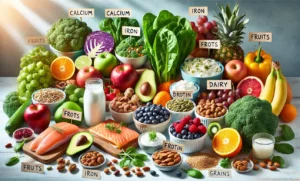What to Eat After Tooth Extraction: 60 Soft Foods to Eat

Undergoing a tooth extraction can be a challenging experience, but with the right dietary choices, you can significantly ease your recovery process. Your healing depends greatly on the foods you choose following dental surgery. This comprehensive guide explores an extensive list of 60 soft foods to eat after tooth extraction that not only soothe your healing gums but also provide essential nutrients to support your body’s recovery. Whether you’ve had a wisdom tooth removed or undergone another dental procedure, these food options will help you navigate the post-extraction period with comfort and optimal nutrition.
- Understanding Post-Extraction Nutrition
- 60 Soft Foods for Post-Tooth Extraction Recovery
- Nutritional Benefits of Recommended Foods
- Preparation Tips for Enhanced Comfort
- The Importance of Hydration in Recovery
- Foods to Avoid After Tooth Extraction
- Advanced Recovery: Transitioning to Solid Foods
- Meal Planning for Post-Extraction Recovery
- Nutritional Supplements During Recovery
- Oral Hygiene During Recovery
- Potential Complications and When to Seek Help
- FAQs Regarding What to Eat After Tooth Extraction
- Conclusion: Nourishing Your Way to Recovery
Understanding Post-Extraction Nutrition
Following dental extraction, your oral cavity requires a period of recuperation. In this recovery phase, it’s essential to opt for foods that are:
- Soft in texture
- Easy to swallow
- Nutritionally dense
- Non-irritating to the extraction site
Proper nutrition is crucial for speeding up healing, lowering the risk of infection, and reducing discomfort. Let’s delve into a diverse array of food options that meet these criteria.
60 Soft Foods for Post-Tooth Extraction Recovery
Fruits & Vegetables
- Applesauce (unsweetened)
- Mashed bananas
- Avocado
- Steamed spinach, finely chopped
- Pumpkin puree
- Mashed sweet potatoes
- Peas, well-cooked and mashed
- Carrots, boiled and pureed
- Butternut squash, cooked and mashed
- Pear puree
- Mashed papaya
- Pureed mango
- Soft-cooked zucchini
- Cauliflower puree
- Mashed turnips
Proteins
16. Scrambled eggs
17. Soft tofu
18. Cottage cheese
19. Greek yogurt
20. Silken tofu blended into smoothies
21. Poached chicken, finely shredded
22. Flaked fish (salmon, tilapia, cod)
23. Hummus
24. Lentils, well-cooked and mashed
25. Baked beans, lightly mashed
26. Soft-boiled eggs
27. Refried beans
28. Pureed chicken or turkey
29. Smooth nut butter (almond, cashew)
30. Soft meatballs in sauce
Grains & Cereals
31. Oatmeal
32. Cream of wheat
33. Rice porridge (congee)
34. Mashed potatoes with gravy
35. Polenta
36. Soft noodles
37. Macaroni and cheese
38. Grits
39. Couscous, well-cooked
40. Quinoa, well-cooked
41. Risotto
42. Soft bread pudding
43. Well-cooked barley
44. Mashed cauliflower “rice”
45. Soft pancakes soaked in syrup
Dairy & Alternatives
46. Ice cream (without nuts or chunky mix-ins)
47. Milkshakes
48. Pudding
49. Custard
50. Smooth ricotta cheese
51. Kefir
52. Soft cheese spreads
53. Soy milk
54. Almond milk yogurt
55. Coconut milk smoothies
Soups & Broths
56. Broth-based soups (strained)
57. Tomato soup (smooth)
58. Creamy butternut squash soup
59. Carrot ginger soup, blended until smooth
60. Pea soup, well blended
Nutritional Benefits of Recommended Foods
Understanding the nutritional value of these foods can help you make informed choices for optimal recovery:
- Protein-Rich Options: Foods like eggs, Greek yogurt, and pureed meats provide essential amino acids necessary for tissue repair and immune function.
- Vitamin C Sources: Fruits like papaya and mango offer vitamin C, which is crucial for collagen formation and wound healing.
- Calcium-Rich Foods: Dairy products and leafy greens supply calcium, vital for maintaining strong teeth and bones.
- Iron-Fortified Choices: Lentils, spinach, and fortified cereals can help prevent anemia, which can slow down healing.
- Omega-3 Fatty Acids: Soft fish like salmon provide anti-inflammatory omega-3s, potentially reducing swelling and discomfort.
Preparation Tips for Enhanced Comfort
To make these foods even more suitable for post-extraction consumption:
- Temperature Control: Serve foods at room temperature or slightly cool to avoid irritating the extraction site.
- Texture Modification: Use a blender or food processor to achieve a smoother consistency when needed.
- Hydration Focus: Incorporate liquid-based foods to maintain hydration, which is crucial for healing.
- Seasoning Caution: Use mild seasonings to prevent irritation, avoiding spicy or acidic additions.
- Portion Control: Choose to eat smaller portions more often to ease the burden on both your jaw and digestive tract.
The Importance of Hydration in Recovery
Adequate fluid intake plays a vital role in ensuring a seamless recovery following dental extraction.
Proper Hydration:
- Aids in wound healing
- Helps maintain electrolyte balance
- Reduces the risk of dry socket
- Supports overall oral health
Although water remains the optimal option, consider including these alternatives in your hydration routine:
- Herbal teas (lukewarm)
- Clear broths
- Coconut water
- Diluted fruit juices (without pulp)
The suction from straws risks dislodging crucial blood clots, potentially slowing your recovery.
Foods to Avoid After Tooth Extraction
Understanding which foods to avoid is equally crucial as identifying suitable options for consumption. Avoid the following:
- Crunchy or hard foods (chips, nuts, raw vegetables)
- Chewy foods (tough meats, gummy candies)
- Spicy foods
- Items high in acid like orange products, fresh tomatoes, and carbonated beverages
- Alcohol
- Hot beverages
- Foods with small seeds or grains
- Carbonated drinks
These foods can irritate the extraction site, dislodge blood clots, or introduce harmful bacteria to the wound.
Advanced Recovery: Transitioning to Solid Foods
During your healing journey, you can slowly incorporate more substantial yet still soft foods into your diet. Here’s a general timeline:
- Days 1-3: Stick to liquids and very soft foods
- Days 4-7: Introduce slightly firmer foods that require minimal chewing
- Week 2: Begin incorporating soft solid foods, chewing away from the extraction site
- Week 3+: Gradually return to your normal diet, as advised by your dentist
Remember, individual healing times may vary. Consult with your dentist prior to implementing any major modifications to your diet following tooth extraction.
Meal Planning for Post-Extraction Recovery
Advance meal preparation can significantly ease your post-extraction recovery journey. Here’s a sample meal plan for the first few days after extraction:
Breakfast
- Creamy Greek yogurt smoothie enriched with banana and leafy spinach
- Lukewarm herbal tea
Mid-Morning Snack
- Applesauce with a drizzle of honey
Lunch
- Creamy pumpkin soup
- Mashed avocado
Afternoon Snack
- Protein shake with added nutritional supplements
Dinner
- Soft-cooked quinoa with pureed vegetables
- Flaked poached fish
Evening Snack
- Sugar-free pudding or custard
This meal plan balances nutrients while keeping foods soft and easy to consume.
Nutritional Supplements During Recovery
In some cases, your dentist might recommend nutritional supplements to support healing. Common supplements include:
- Vitamin C: Enhances the body’s ability to generate collagen and mend injured tissues.
- Vitamin D and Calcium: Essential for bone health
- Zinc: Crucial for enhancing tissue repair and strengthening the body’s natural defenses.
- Probiotics: Can help maintain oral health and support the immune system
It’s essential to discuss potential supplement use with your dentist or healthcare professional before integrating them into your post-extraction care plan.
Oral Hygiene During Recovery
Keep your mouth clean is important to avoid infections and accelerate the healing process. However, you need to be gentle to avoid disturbing the extraction site. Follow these tips:
- Hold off on tooth brushing for one full day following your dental removal procedure.
- Clean your teeth with a gentle, flexible brush and take extra care near the surgical area.
- Post-meal, cleanse your mouth using a warm saltwater rinse, prepared by dissolving 1/2 teaspoon of salt in warm cup of water.
- Avoid mouthwash containing alcohol for at least a week
- For optimal healing, steer clear of smoking and all forms of tobacco consumption
Potential Complications and When to Seek Help
Although adhering to a soft food regimen greatly minimizes risks, staying vigilant about possible complications remains crucial:
- Dry Socket: If you experience intense pain 3-5 days after extraction, contact your dentist immediately.
- Infection: Signs include persistent swelling, fever, or unusual discharge.
- Allergic Reactions: If you introduce new foods and experience itching or swelling, seek medical attention.
- Prolonged Bleeding: If bleeding continues beyond 24 hours post-extraction, consult your dentist.
FAQs Regarding What to Eat After Tooth Extraction
What’s the recommended duration for maintaining a soft food diet following a dental extraction?
Generally, you should follow a soft food diet for about a week. However, your dentist will provide specific guidance based on your individual case.
Can I drink coffee after a tooth extraction?
It’s best to avoid coffee for the first 24 hours after your procedure, as the caffeine and heat can interrupt the healing process.
Can I drink alcohol after tooth extraction?
It’s best to avoid alcohol for at least 24 hours after extraction, as it can interfere with blood clot formation and delay healing.
Can we eat ice cream after a tooth extraction?
Yes, ice cream, especially soft-serve, can be soothing post-extraction. Opt for selections devoid of nuts or coarse enhancements to prevent potential irritation.
Can tooth extraction lead to unintended weight loss?
Some minor weight loss is normal due to dietary restrictions. Focus on nutrient-dense soft foods to maintain your health during recovery.
What’s the reason drinking through straws isn’t recommended following dental removal surgery?
Do not use straw, as the suction created can easily dislodge the blood clot at the extraction site. Which can result in painful healing problems like empty tooth cavities.
Can I eat spicy foods after tooth extraction?
Avoid spicy foods for at least a week, as they can irritate the extraction site and cause discomfort.
How can I get enough protein on a soft diet?
Focus on protein-rich soft foods like Greek yogurt, eggs, smooth nut butter, and protein shakes to meet your protein needs.
When can I stop worrying about dry sockets?
Dry sockets typically occur within the first five days after extraction. Following your dentist’s advice on aftercare will help prevent them.
Is it advisable to engage in tooth brushing following a tooth extraction procedure?
Following the removal procedure, it is advisable to delicately clean your teeth and avoid the treated region. Rinse mouth with warm salt water.
What symptoms indicate an infection after a tooth extraction?
Signs of infection include persistent and severe pain, swelling that worsens over time, fever, and an unpleasant taste in your mouth. Consult with the dentist if you notice these symptoms.
Conclusion: Nourishing Your Way to Recovery
Choosing the right foods after a tooth extraction is an important step in ensuring a smooth and comfortable recovery. By focusing on soft, nutrient-rich options, you not only protect the sensitive extraction site but also provide your body with the essential building blocks for healing.
Remember, every individual’s recovery process is unique. Listen to your body, follow your dentist’s specific instructions, and don’t hesitate to reach out if you have concerns. With patience and proper nutrition, you’ll be back to enjoying your favorite foods in no time, with a healthier, happier smile.
After following this comprehensive guide, you can navigate your post-extraction recovery with confidence, ensuring that your diet supports optimal healing and comfort. For tailored guidance on your path to complete healing, be sure to seek your dentist’s expert counsel.






